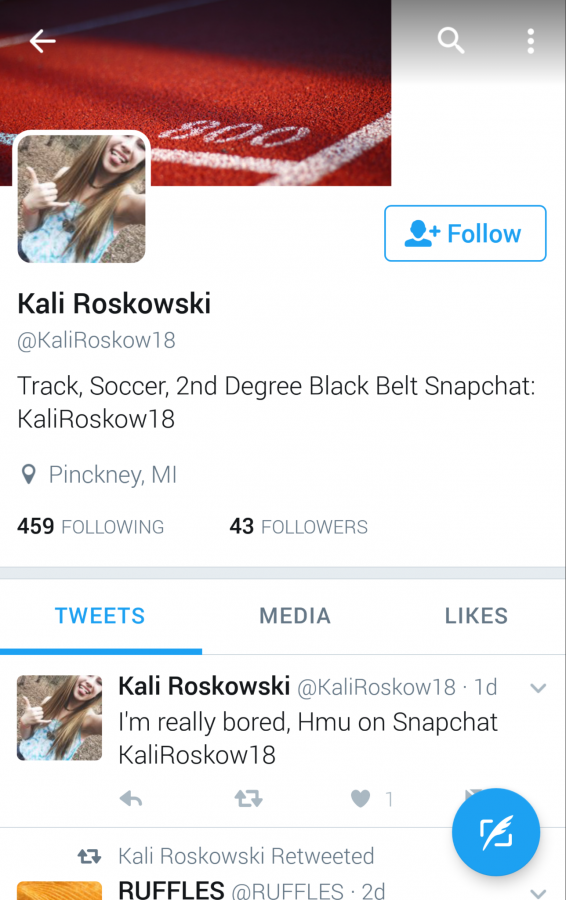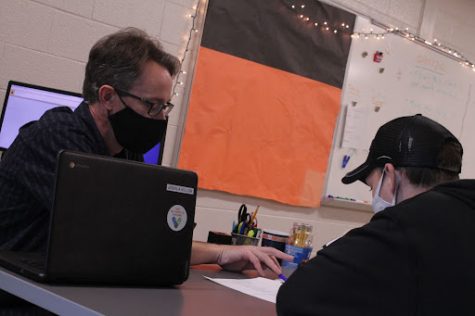A stolen identity
Before the page was taken down, I screenshotted the fake Twitter page that was made in my name. The Facebook, Snapchat and Instagram accounts had already been taken down at this point.
Identity theft: The illegal use of someone else’s personal information especially in order to obtain money or credit. According to the Webster Dictionary, that is the definition of someone using another’s information to take control of another’s life.
On January 27, I was called into Principal Richard Cook’s office. He told me to sit down, and he immediately cut to the chase: My personal information had been used to make a fake Facebook account by a boy from Pinckney High School. As I later found out, an Instagram account, Snapchat account, and Twitter account were also made in my name, using my information.
The boy’s goal was not to inflict harm on me, but to make his ex-girlfriend, the true victim, jealous. However, the police got involved before anything could go too terribly wrong.
“The circumstances surrounding your profile are probably the most rare,” officer Ickes of Green Oak Charter Township Police Department said. “It seems that it was created to impress another, and that there were no malicious intentions.”
According to a regulatory filing for Facebook in 2012, about 8.7 million users possessed what the media site categorized as a false account.
“The most common are fake accounts using a name that is separate from any pictures. They are usually very difficult to trace. These accounts are generally created for harassment, intimidation and stalking purposes.”
According to Ickes, the term “identity theft” is generally used when someone uses the identity of another for financial gain by stealing money or creating accounts that will be billed to the person whose identity was stolen.
After paying for food with her debit card at Wendy’s fast food restaurant in Chelsea, Michigan, junior Shannon Smith had her information stolen. According to Smith, a hacker got into Wendy’s system and stole multiple customers’ information.
“It happens like every year,” Smith said. “The bank will call me and be like, ‘We have got you a new card because this happened and someone was trying to steal this amount of money.’ So, they stop it, which is good. You’ve just gotta’ be careful where you use your card and the places you’re at, because that’s where identity theft happens normally is with people stealing your name by them buying stuff off Amazon. They’ll type in your name but use their own address and your credit card information.”
The digital world, especially social media, has created an easy outlet for predators to stalk others in an anonymous profile, according to Ickes.
“The social media realm is much darker when it involves someone impersonating another,” Ickes said. “Most commonly, it would be done by using your picture but a made up name. Your profile was different, and shows the age of who was using it. It allowed us to easily track it back. Usually with teenagers, it’s texting and Facebook. They don’t hide their identity. The end game is usually harassment due to a conflict, and it gets aired using social media.”









